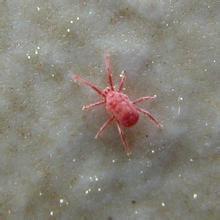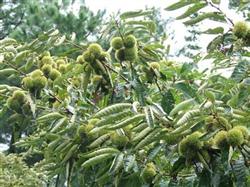Fertilization skills and key points of Chestnut Orchard

1. Applying sufficient base fertilizer is the basic fertilizer for the growth and development of chestnut trees throughout the year, which can enhance the photosynthetic efficiency of leaves, help to restore tree potential, accumulate more nutrients, and lay the foundation for high yield in the coming year. Generally, after fruit harvest in autumn, combined with deep ploughing to improve the soil, it is mainly organic fertilizer. For trees with moderate potential, medium fertility and more fruit, about 2000 kg of rotten farm manure and 1.0-1.5kg of sulfur-based compound fertilizer are applied per mu. The main fertilization methods are as follows: ① radial ditch is applied to the trunk as the center, and 4-6 radial ditches are dug equidistantly at the edge of the crown, with a width of 30-40 cm. The length of the trench depends on the size of the crown, the general length of the trench is 2 in the crown and 2 outside the crown; the ditch depth is about 30 cm, and the groove depth should be gradually deepened from inside to outside. ② annular groove is applied to dig a 40-50 cm wide and 50 cm deep annular groove 20-30 cm outside the crown and apply fertilizer. This method is suitable for young trees with small crown. The ③ strip trench is applied to the opposite sides of the crown, which is 50 cm deep and 40 cm wide, depending on the size of the crown, and fertilized. Second, reasonable topdressing pre-anthesis fertilizer: generally, nitrogen fertilizer is the main fertilizer before and after sprouting for the first time, and high nitrogen compound fertilizer 0.3-0.5 kg / plant can be applied to promote leaf sprouting, flowering and fruiting, and increase fruit setting rate and yield. Strong fruit fertilizer: in the early stage of fruit expansion after anthesis, the application of high potassium compound fertilizer 0.5-1 kg / plant can promote fruit expansion, improve yield and fruit quality. In addition, during the growing period from May to July, pesticides should be sprayed in combination with pest control, mixed spraying of manganese and magnesium elements should be added to supplement micro-fertilizer. In order to prolong the functional period of leaves, increase the single grain weight of nuts and increase the accumulation of nutrients in fruits, so as to improve the commercial value of fruits.
- Prev

Control of Castanea mollissima Red Spider
The Chinese chestnut red spider is called the needle leaf small claw mite, harms the Chinese chestnut leaf, causes the leaf to fade into the yellow and white small spot, serious leaf scorch turns brown, causes the reduction in yield. The winter eggs overwintered on the leaf scars, coarse bark crevices and branches on the back of 1-4-year-old branches, and began to hatch from late April to early May the following year, when the chestnut buds were sprouting.
- Next

High yield planting techniques of Castanea mollissima
If we want to have a high yield in the coming year, we must break the practice of planting Chinese chestnut, otherwise it will affect the yield and quality of Chinese chestnut in the following year. In particular, chestnut trees in the full fruit period should do a good job in post-harvest management, focusing on the following four points. 1. The winter pruning date for winter pruning chestnut trees should be arranged in mid-December.
Related
- Moge, come on! The staff of the peasant association in the producing area of cantaloupe were frightened when the crowd gathered.
- Causes and Solutions of low Fruit setting rate of Apple
- Symptoms and control measures of passion fruit virus disease
- Fruit growing lesson: how do apple orchards keep high yields?
- Can you build orchards in the mountains? What are the pros and cons?
- How to manage the coloring period of Crisson grape?
- This paper introduces the processing technology of two kinds of fig products.
- How much is a month for retired teachers in rural areas by 2020?
- How can strawberry planting increase sugar content? We should pay attention to management in many aspects.
- What are the cultivation techniques on how to improve the yield of golden fruit?

